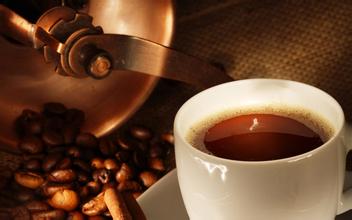Correct water drinking skills, do not drink coffee from metal cups
We all know that drinking more water is good for internal circulation, toxin excretion, and metabolism at the right time. But are you sure you know how to drink water? How much you should drink every day, how to arrange the drinking time, how to choose the cup and other details will affect the final drinking effect. The editor has sorted out the skills of drinking water correctly, so that you drink every drop of water to the point!

First, how to choose the cup
1. Don't drink coffee from a metal cup
Metal cups, such as stainless steel, are more expensive than ceramic cups. Metal cups are suitable for most cases, and the metal elements in the composition are usually stable, but they may dissolve in an acidic environment, so it is not safe to drink acidic drinks such as coffee and orange juice.

2. Plastic cups are most likely to hide dirt.
Plastic cups should also be unpopular. Because plasticizers are often added to plastics, which contain some toxic chemicals. When hot water or boiled water is filled with plastic cups, toxic chemicals are easily diluted into the water, and the internal microstructure of the plastic has many pores, in which dirt is hidden, and unclean cleaning is easy to breed bacteria. Therefore, when choosing and buying plastic cups, we must choose the water cups made of edible-grade plastics in line with national standards.
3. Potential carcinogens hidden in disposable paper cups
Disposable paper cups only look hygienic and convenient, in fact, the qualified rate of the product can not be judged, whether it is clean and hygienic, can not be recognized with the naked eye. From an environmental point of view, disposable paper cups should be used as little as possible. Some paper cup manufacturers add a lot of fluorescent brightener to make the cup look whiter. It is this fluorescent substance that can cause cells to mutate, and once it enters the human body, it will become a potential carcinogenic factor; secondly, those unqualified paper cups are generally soft and easy to deform after being poured into water, while some paper cups are poorly sealed and the bottom of the cup is easy to seep, which makes it easy for hot water to scald hands. What's more, when you gently touch the inside of the paper cup with your hand, you can feel the fine powder on it, and the touch of your fingers will turn white. This is a typical shoddy paper cup.
4. Beware of heavy metal poisoning when using colorful cups
The colorful cups are attractive, but you'd better not use them. Because there are huge hidden dangers in those bright pigments, especially the inner wall is coated with glaze, when the cup is filled with boiled water or drinks with high acidity and alkalinity, the toxic heavy metal elements such as lead in these pigments are easily dissolved in the liquid. People drink liquids with chemicals, which will do harm to the human body.
5. The ceramic cup without colored glaze is not only warm but also safe.
The first choice for drinking water is the ceramic cup without colored glaze, especially the inner wall should be colorless. Not only the material is safe, can withstand high temperature, but also has a relatively good heat preservation effect, drinking hot water or tea is a good choice.
Second, how much to drink?-- the principle of 6 glasses of water
Balance is the basis of good health. Under normal circumstances, the intake and discharge of water are about the same. The daily drainage of human body through urine is about 1500ml, followed by lung exhalation about 350ml, skin evaporation and perspiration about 500ml, fecal 150ml, the total amount is about 2500ml. Since the intake and discharge of water should be equal, under normal conditions (adults with light physical labor at room temperature) need 2500mL water every day, excluding the water from food to get 1000ml, the human body metabolizes to produce 300ml water, and each person needs to drink 1200ml at least every day. If the capacity of the teacup is 200ml, it is about 6 cups.
Note: the 6 cups of water we are talking about here are only the minimum amount of water to drink, and the water demand of the human body often increases with the increase of physical activity, the change of temperature, the amount of sweat, etc., and the water demand per person can range from 2L to 16L. After entering the summer, the amount of perspiration increases obviously, so we should pay special attention to the increase of drinking water. The amount of drinking water can be reduced appropriately in winter.
Tips for increasing the amount of water when the number of cups remains the same
Some people say that I drink at most a few glasses of water every day. I don't know how to increase the amount of water I drink. We can choose the size of the drinking cup according to the season. Generally speaking, when drinking less water in winter, we choose 200ml's insulation cup; in spring and autumn, we can replace it with 300ml's teacup; in summer, we need the most water, and we can change it into 400ml's large glass. When we are used to several glasses of water a day, adjusting the capacity of the cup according to the season is a good way to increase the amount of water we drink. (reminder: even if it is changed to a large cup, the drinking water should be controlled at 200-300ml each time.)
Third, the prime time to drink water-a small amount of many times, a cup in the morning and evening
Drinking time should be allocated at any time of the day, a small number of times, drink slowly, each time 200ml. In particular, some friends are slow to respond to thirst and can't wait for their mouths to dry before they want to drink water.
Everyone may have their own drinking habits, but there are two recommendations for long-term adherence: a glass of water in the morning and evening (200ml). In the case of drinking water on an empty stomach, the water you drink can enter the blood circulatory system in about an hour. So a cup of water in the morning: one can achieve the purpose of diluting the viscosity of the blood, the second is to help the secretion of digestive juice and increase appetite, the third is to promote gastrointestinal peristalsis to facilitate defecation.
Drinking a glass of water 1-2 hours before going to bed is helpful to supplement the hidden water loss at night and the water taken away by urine, prevent the increase of blood viscosity and reduce the sudden occurrence of cardiovascular and cerebrovascular diseases.
If you are not used to drinking tasteless plain boiled water in the morning, try dripping some honey with a touch of sweetness. Thick honey water and salt water are not recommended to drink on an empty stomach in the morning. Friends with poor gastrointestinal function are advised to drink warm boiled water. Friends who want to relieve constipation can try cold boiled water and drink a glass of water every 2 or 3 hours at other times.
Fourth, the human body water shortage signal-- do not wait for thirst before drinking water
Some people say, I haven't been sweating all day, why should I drink water? Think about the heat we exhale in winter. What is that? water! Invisible dehydration occurs in the human body all the time. Some people say, I don't feel thirsty, why should I drink water? By the time you feel thirsty, your body is short of water. Although the proportion of water in the human body is large, even a slight loss of water will make the human body uncomfortable.
When the body loses 1-2% of its water, the body's thirst mechanism begins to work. With thirst, we feel mild discomfort and loss of appetite. When the water shortage reaches 3-4%, we will feel dry mouth, reduced urination and reduced work efficiency. Water loss reaches 4-8%. In addition to the above symptoms, there may also be dry skin, physical fatigue, irritability and other symptoms. When the water loss exceeds 8%, there may be high fever and trance. The loss of water exceeds 10%, which may be life-threatening. Chronic low levels of dehydration can lead to a series of health problems, such as cataracts, myocardial infarction, cerebral thrombosis, chronic pain and so on. It is very important for health to keep the body stable and have enough water.
What kind of water do you drink
Tap water, pure water and mineral water are the main drinking water for Chinese residents.
Tap water comes from natural water sources and enters residents' homes after a series of disinfection. After boiling tap water, clean, sterile, but also can maintain some minerals in the raw water, economical and applicable, is the first choice of drinking water in daily life.
On the basis of tap water, pure water uses distillation, ion exchange or osmosis to remove harmful substances in water. Unfortunately, it also removes potassium, calcium, sodium, magnesium and other mineral elements needed by the human body. Although we do not recommend using pure water as long-term drinking water, especially for elderly friends and teenagers, it can easily lead to lack of nutrition, but it can be used when making tea and cooking mung bean soup, and the green tea is fragrant. Boiled mung bean soup is not easy to change color, and the loss of antioxidants is small.
Mineral water refers to the general name of groundwater containing certain minerals and special ingredients. Contains mineral salt, and mostly ionic, easy to be absorbed by the human body. However, the price of mineral water is high, so it is difficult to become a long-term drinking water.
Whether it is tap water, pure water, mineral water is only a carrier, we can not regard it as a pure source of nutrients, so in the choice should pay attention to: 1, whether the water source is safe; 2, economic and practical, is the important indicator! There is no need to superstition those more than ten yuan a bottle of aristocratic mineral water, popular "alkaline water".
6. drink heavily and drink too much water, beware of "water poisoning"
Drink water too fast
After sweating, it is difficult to be thirsty, and some friends like to drink coolly, but they do not realize that they only drink when they are thirsty, and the body is already short of water. The mouth is happy, but the body suffers. Drinking water too quickly causes gastrointestinal digestive juice dilution, blood volume increase, there will be palpitation, shortness of breath, gastrointestinal discomfort, fatigue and other "drunk" symptoms.
Drink too much water
The body takes in too much water, and the kidneys fail to discharge the excess water in time, causing water retention in the body, which can cause toxic symptoms such as headache, nausea, vomiting, memory loss, mental confusion and even coma and death! Friends who suffer from kidney disease and liver disease should pay special attention.
Water is the source of life, drinking water can properly replenish the moisture of the body, but also beauty, but the premise is: you should drink water correctly. The cup used to drink water, the amount of water to drink, the interval between drinking water, what kind of water to drink, and so on, are all closely related to health and beauty. In order to develop a good complexion and good health, learn the above water drinking skills.
Important Notice :
前街咖啡 FrontStreet Coffee has moved to new addredd:
FrontStreet Coffee Address: 315,Donghua East Road,GuangZhou
Tel:020 38364473
- Prev

Coffee is the right way to lose weight, three principles
Many people say that coffee has the effect of losing weight, but do you know it? What actually makes you thin is the caffeine in coffee. This natural caffeine component can effectively decompose body fat and release fat in the blood. after drinking coffee for 30-40 minutes, the concentration of fatty acids in the blood will become higher. If you exercise in the right amount, the fatty acids can be converted into heat energy and burn effectively.
- Next

Coffee basic knowledge Coffee Control must know 25 Common sense of Coffee
1. According to legend, coffee was discovered by an Ethiopian shepherd named Khaldi in the 9th century. While herding the sheep, Khaldi found that the sleepy sheep looked very excited after eating the red fruit of an evergreen tree. Khaldi brought the fruit to a Muslim cleric who made the fruit from the coffee tree into a delicious drink. 2. Although
Related
- Beginners will see the "Coffee pull flower" guide!
- What is the difference between ice blog purified milk and ordinary milk coffee?
- Why is the Philippines the largest producer of crops in Liberia?
- For coffee extraction, should the fine powder be retained?
- How does extracted espresso fill pressed powder? How much strength does it take to press the powder?
- How to make jasmine cold extract coffee? Is the jasmine + latte good?
- Will this little toy really make the coffee taste better? How does Lily Drip affect coffee extraction?
- Will the action of slapping the filter cup also affect coffee extraction?
- What's the difference between powder-to-water ratio and powder-to-liquid ratio?
- What is the Ethiopian local species? What does it have to do with Heirloom native species?

